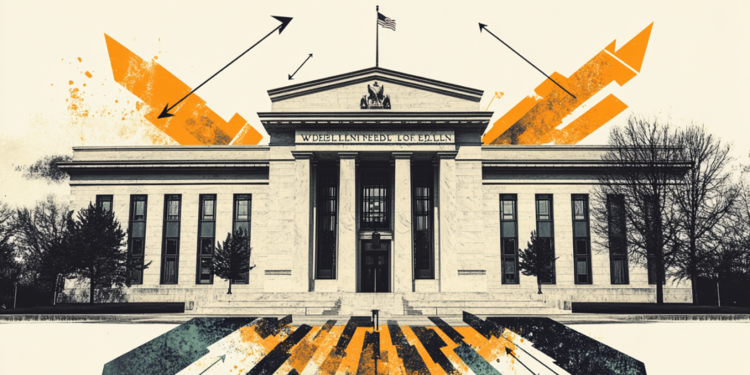- The IBEX 35 rises about 1% and reaches maximum three weeks on Wednesday.
- Donald Trump’s new statements about China and the president of the Fed, Jerome Powell, improve the feeling of the market.
- Siderúrgic and bank lead the increases in the Spanish index.
The IBEX 35 recovers this Wednesday promoted by the improvement of market feeling after the change in tone of the president of the United States, Donald Trump, about relations with China and the confrontation with Jerome Powell, responsible for the Fed.
The Spanish Ibex 35 index rises at this time about 1% around 13,135 points after reaching the opening of the European session its maximum level of 20 days in 13,205 points.
He President of the United States, Donald Trump, calmed the markets in the American session on Tuesdaywhen he appeared at a press conference to ensure that he will not fire Fed President Jerome Powell. “The press rushes with things. No, I have no intention of saying goodbye. I would like to see it a little more active in its idea of lowering interest rates.”
On the other hand, Trump also pointed out that conversations with China are going well, adding that he believes they will reach an agreement, with tariffs that will not be 145% but not 0%.
Banks and steel
The Arcelomittal steel heads heads in IBEX 35 with a profit of 4.71% at this time, while Acerinox also records an impulse of 2.56%.
On the other hand, the large banks show increases greater than 2%, with Unicaja gaining 2.97%, while the BBVA adds 2.76%, the Sabadell Bank 2.55%, the Santander, 2.72%and Caixabank 2.23%.
Apart from banks and steel, the main increases are in intl.c.air GP (+3.83%) and Puig Brands (+3.95%).
Ibex 35 levels
A firm climb above 13,200 points would point to 13,350, April ceiling reached last month of this month. Above the historical maximum achieved in March at 13,515.
In the southern direction, the first support waits at the maximum of Tuesday, around 13,000/13,010 points. Below, the floor of the week reached yesterday around 12,800 will serve.
FAQS risk feeling
In the world of financial jargon, the two terms “appetite for risk (Risk-on)” and “risk aversion (risk-off)” refers to the level of risk that investors are willing to support during the reference period. In a “Risk-on” market, investors are optimistic about the future and are more willing to buy risk assets. In a “Risk-Off” market, investors begin to “go to the safe” because they are concerned about the future and, therefore, buy less risky assets that are more certain of providing profitability, even if it is relatively modest.
Normally, during periods of “appetite for risk”, stock markets rise, and most raw materials – except gold – are also revalued, since they benefit from positive growth prospects. The currencies of countries that are large exporters of raw materials are strengthened due to the increase in demand, and cryptocurrencies rise. In a market of “risk aversion”, the bonds go up -especially the main bonds of the state -, the gold shines and the refuge currencies such as the Japanese yen, the Swiss Franco and the US dollar benefit.
The Australian dollar (Aud), the Canadian dollar (CAD), the New Zealand dollar (NZD) and the minor currencies, such as the ruble (Rub) and the South African Rand (Tsar), tend to rise in the markets in which there is “appetite for risk.” This is because the economies of these currencies depend largely on exports of raw materials for their growth, and these tend to rise in price during periods of “appetite for risk.” This is because investors foresee a greater demand for raw materials in the future due to the increase in economic activity.
The main currencies that tend to rise during the periods of “risk aversion” are the US dollar (USD), the Japanese yen (JPY) and the Swiss Franco (CHF). The dollar, because it is the world reserve currency and because in times of crisis investors buy American public debt, which is considered safe because it is unlikely that the world’s largest economy between in suspension of payments. The Yen, for the increase in the demand for Japanese state bonds, since a great proportion is in the hands of national investors who probably do not get rid of them, not even in a crisis. The Swiss Franco, because the strict Swiss bank legislation offers investors greater protection of capital.
Source: Fx Street
I am Joshua Winder, a senior-level journalist and editor at World Stock Market. I specialize in covering news related to the stock market and economic trends. With more than 8 years of experience in this field, I have become an expert in financial reporting.







